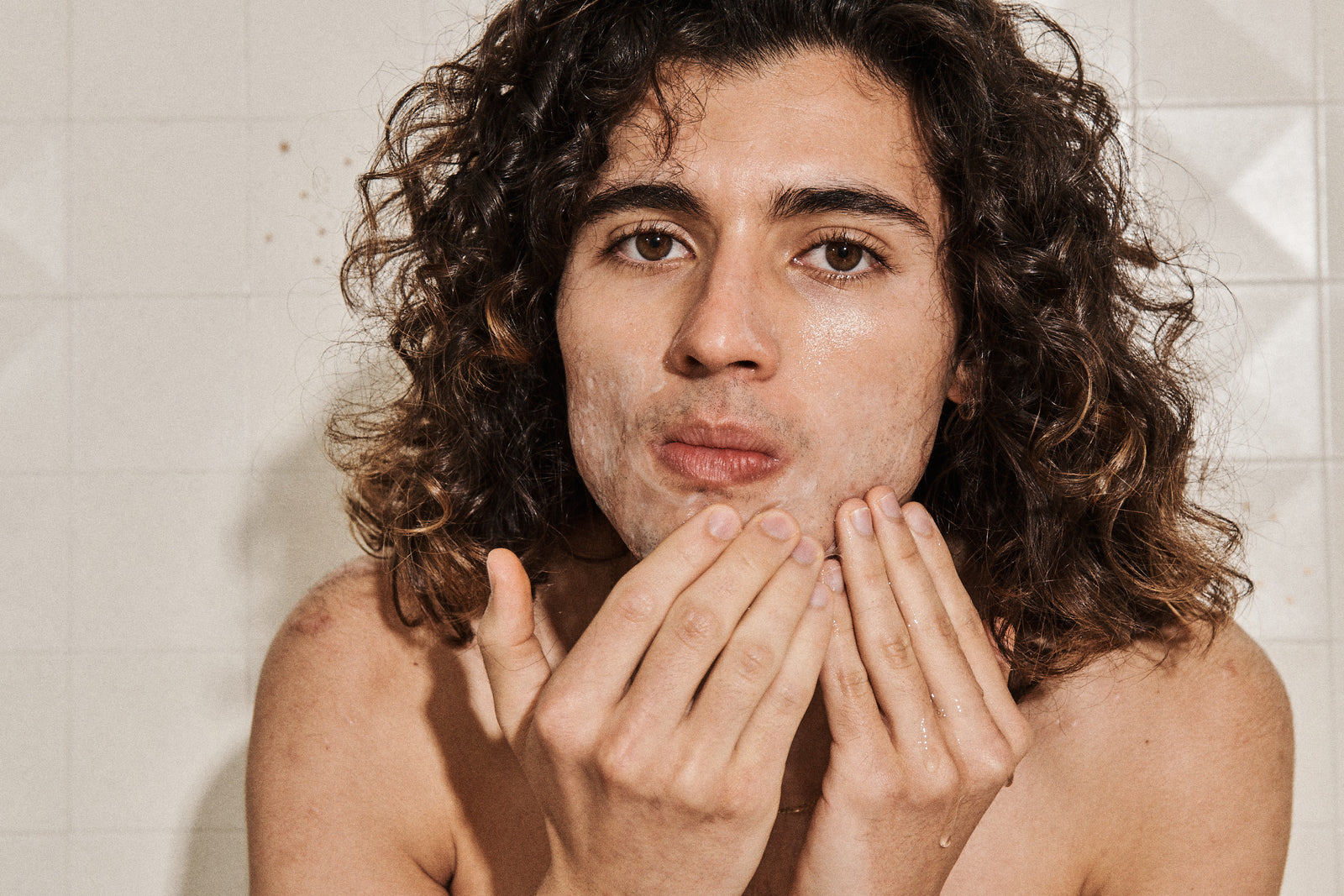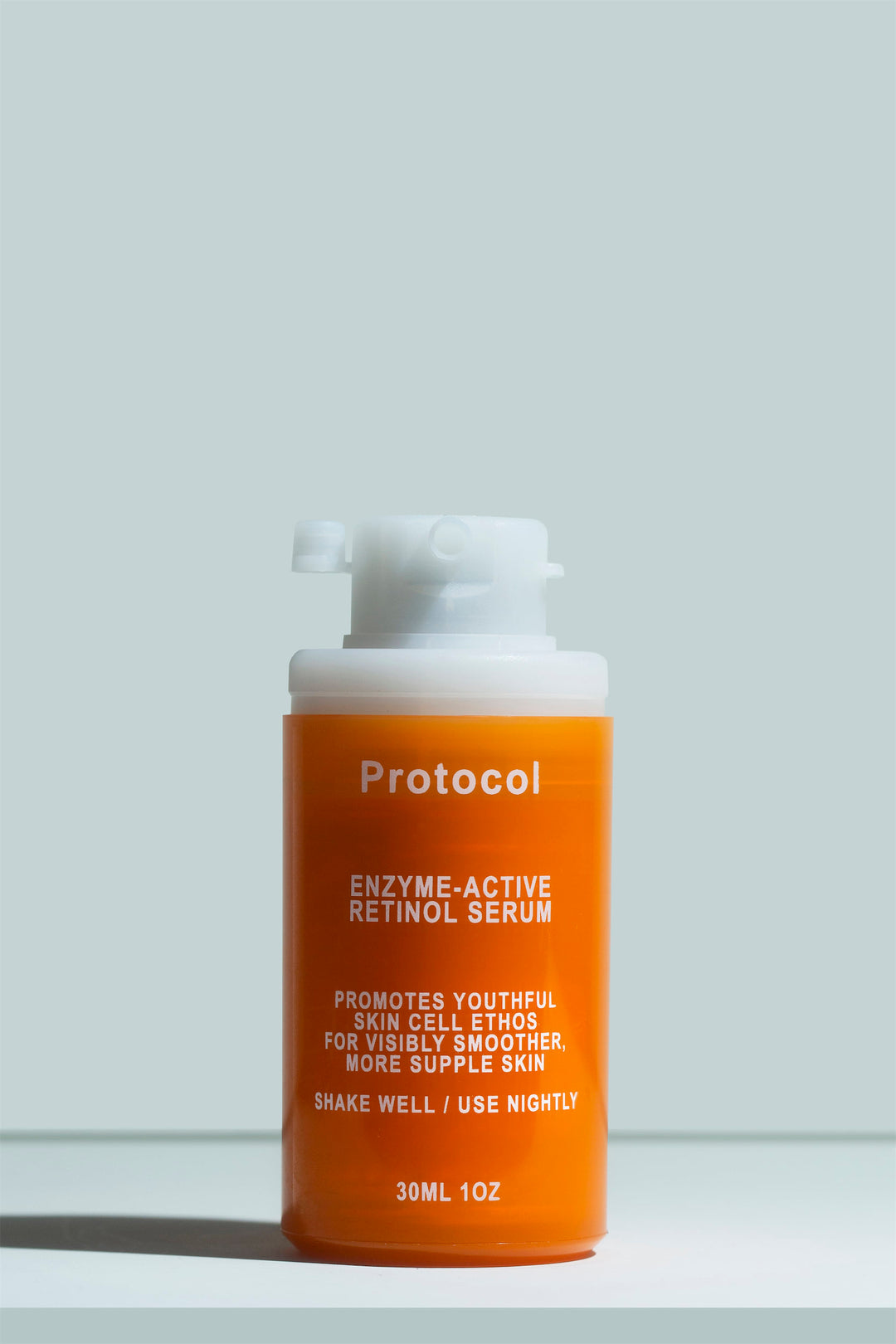Skin Purging

Skin purging is a bittersweet phenomenon. It’s a “necessary” breakout that can occur in the weeks or months after you’ve started using a skin-renewing product.
It’s better to know a purge might be coming before you start a potent retinoid or chemical exfoliant, but if you’re sitting in front of your screen with a face full of unexpected blemishes, it won’t hurt to learn about it now.
What is purging?
Purging is a breakout that can occur when someone with acne-prone skin starts using skin-renewing ingredients like retinoids or chemical exfoliants. It presents as a slight increase in blemishes, usually in the areas where you normally break out anyway.
Dermatologists are generally aware of the phenomenon, especially when it comes to retinol purging, but to date, no researcher has posited a clear reason for it. It’s often conflated with irritation, which is common after starting prescription tretinoin (i.e., retinoid acid).
Since acne is an inflammatory condition, irritation does have the potential to exacerbate breakouts, especially at the outset when the skin is getting used to the new product. However, this type of flare-up caused by irritation isn’t necessarily purging.
In the skincare world, we’ve noticed that a small increase in breakouts can occur even when the skin doesn’t seem irritated. While the phenomenon hasn’t been studied, the logical conclusion is that any ingredient that stimulates the shedding of dead skin cells can cause purging.
Basically, by removing dead skin from the surface layers of the skin, we encourage the lower levels of the skin to regenerate more quickly. Any clogs below the skin surface rise to the top before your new skin-renewing ingredient has had a chance to clear away existing blemishes. What follows is a temporary situation where (and forgive the cliche) your skin looks a little worse before it gets better.
What does purging skin look like?
Purging simply looks like a slightly worse version of your normal breakout. Your skin shouldn’t be more inflamed than usual (if it is, there’s likely also some underlying irritation), but you may notice more closed comedones or blackheads.
How to treat purging skin?
So you know that your skin is purging from retinol or some other active. What can you do? Here are our suggestions.
- First of all, breathe. This is normal and expected, so it’s no cause for concern.
- Be patient, since the best way to deal with retinol purging is just to let it run its course.
- Keep using your products. Avoid making any drastic changes to your skincare routine (unless it contains a lot of superfluous products) since that just takes away your ability to judge things objectively.
- If you experience any raised, inflamed, or painful blemishes, consider using pimple patches. They’ll help individual blemishes heal and they’ll also reduce the temptation to pop your pimples.
Which ingredients cause purging?
Any ingredient that speeds up the skin cell turnover rate or encourages exfoliation can lead to purging. The most common culprits are the following ingredients:
- Retinoids - especially retinoic acid and adapalene, but also retinal and high percentages of retinol
- AHAs like glycolic acid and lactic acid
- BHA or salicylic acid
- Benzoyl peroxide
Some skincare enthusiasts also theorize that ingredients like vitamin C and niacinamide can also cause purging, even though they’re not considered skin resurfacers. We think what’s more likely is that aggressive formulations irritate the skin, leading to breakouts. Admittedly, this is just conjecture - no one is doing this science.
There’s no guarantee that you’ll purge if you introduce these ingredients, though. Even with prescription tretinoin (the product most strongly associated with retinol purging), only 10%-20% of users will have a flare-up. The good news? Just not purging doesn’t mean that your AHA or retinoid isn’t working.
Purging vs breakouts vs irritation
We hate to dash your hopes, but unfortunately, there’s no easy way to visually distinguish between a skin purge or breaking. The other complicating factor is that often, it’s temporary irritation that’s responsible for your breakouts.
So here’s what to consider:
- What’s the timeline? According to foundational retinoic acid research, purging usually starts within the first few weeks of starting powerful new skincare treatments and should resolve itself within a few months.
- Breakouts caused by irritation will last longer but will resolve themselves if your skin gets used to the product. We notice this more often with very intense prescription products, as opposed to gentler over-the-counter or cosmetic options like retinal.
- A product that’s comedogenic for you (i.e., clogs your pores) will lead to a more unusual breakout. You may notice acne in areas where your skin is usually clear, and the acne will not resolve itself on any timeline, even if your skin is otherwise not too irritated.
For how long will my skin purging last?
True skin purging without underlying inflammation should only last for a month or two, as your skin goes through a complete regeneration cycle. That may feel like a long time, but take into account how long you’ve been living with breakouts. Once you are past this phase, your skin will likely be clearer than ever.
If it takes longer for your skin to start clearing up and improving, there might be another issue at fault, like irritation or comedogenicity.
Sometimes, it can be hard to tell when your skin is starting to improve. Take a “before” picture that you can use for comparison to get a more objective idea of how far your skin has come.
Can you stop skin purging?
Since purging hasn’t been closely explored by the medical community, we don’t have any great guidelines on how to treat it. In our experience as formulators and die-hard skincare enthusiasts, however, it’s usually best to just endure the purge, especially if you’re not seeing signs of irritation.
Generally, having a multi-faceted approach to dealing with breakouts, like using both retinoids and salicylic acid or benzoyl peroxide, may reduce your chances of a bad purge, but once it starts, focus on nurturing your skin while also sticking to your active ingredients.
Getting through it
The best way to deal with purging skin is just to get through it. If you’re currently experiencing a purge - that sucks! We’ve been there and we empathize with your suffering.
Some lucky folks manage to use skin-renewing products without purging, but for those of us who aren’t so fortunate, try to embrace it as a reminder that your skincare is doing something.
That said, don’t be complacent. Pay attention to the timeline, and if your skin doesn’t improve within a few months, you may want to re-evaluate. Dealing with acne is often a game of trial and error, and having a doctor or dermatologist help you through the process can make a big difference.




